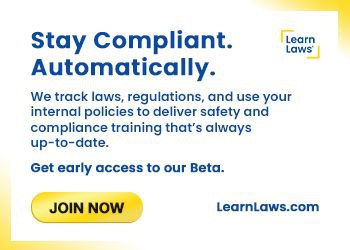The Environmental Protection Agency (EPA) issued a direct final rule on November 17, 2025, amending 40 CFR Part 370 to align the Emergency Planning and Community Right-to-Know Act (EPCRA) hazardous chemical inventory reporting requirements with recent updates to the Occupational Safety and Health Administration's (OSHA) Hazard Communication Standard (HCS). Effective January 16, 2026, with compliance required for the 2026 reporting year by March 1, 2027, this rule addresses discrepancies arising from OSHA's 2012 and 2024 HCS revisions. By conforming EPCRA regulations to OSHA's framework, the rule aims to enhance clarity, reduce interpretation challenges for facilities, and bolster safety for first responders and communities. The action is noncontroversial, as EPCRA statute explicitly ties its definitions to OSHA's, and it imposes no additional burdens while improving regulatory harmony.
Background and Statutory Authority
EPCRA, enacted in 1986, requires facilities handling hazardous chemicals to report inventories to state and local authorities, fostering community awareness and emergency planning. Sections 311 and 312 mandate submission of Safety Data Sheets (SDSs) or lists of chemicals grouped by health and physical hazards, along with annual Tier I or Tier II inventory forms. These requirements rely on OSHA's HCS for defining hazardous chemicals and hazard categories, as specified in 42 U.S.C. 11021 and 11022.
OSHA's 2012 HCS update adopted the United Nations Globally Harmonized System (GHS), replacing Material Safety Data Sheets (MSDSs) with SDSs and revising hazard classifications. EPA aligned EPCRA rules in 2016 but retained some outdated terms. The 2024 OSHA update, effective May 20, 2024, further refined classifications to match GHS Revision 7, introducing changes like replacing "Flammable Aerosols" with "Aerosols and Chemicals Under Pressure" and incorporating desensitized explosives. EPA's current rule directly adopts these to fulfill its statutory obligation, as noted in the preamble: "This action adopts the OSHA definitions and hazard categories as is required by the EPCRA statute and its regulations."
Key players include EPA, as the EPCRA administrator, and OSHA, whose standards EPCRA references. State Emergency Response Commissions (SERCs) and Local Emergency Planning Committees (LEPCs) implement reporting at the local level, while facilities—owners and operators—must comply.
Key Revisions to Hazard Categories and Definitions
The rule expands EPCRA hazard categories from 24 to incorporate OSHA's 112 detailed classes and subcategories, providing more precise risk information. Previously, EPCRA grouped hazards broadly, such as "Flammable (gases, aerosols, liquids, or solids)." Now, it lists specifics like "Flammable Gases—Category 1A" and "Aerosols—Category 1," drawn from 29 CFR 1910.1200 Appendices A and B. This shift ensures facilities can directly copy SDS Section 2 data, reducing errors.
Definitions are updated and relocated from §370.66 to §370.3 for clarity. "Hazard category" now explicitly means OSHA's classes and categories. The term "Material Safety Data Sheet" is removed throughout, aligning with OSHA's exclusive use of "Safety Data Sheet." Minor plain-language edits, such as capitalizing "Extremely Hazardous Substance," distinguish EPCRA's list from broader Clean Air Act uses.
These changes address past inconsistencies. For instance, the 2024 OSHA update reclassified pyrophoric gases under flammable gases, which EPCRA now mirrors to avoid confusion.
Implications for Facilities and Emergency Planning
Facilities subject to OSHA's HCS must report if thresholds are met: 500 pounds or TPQ for Extremely Hazardous Substances, and 10,000 pounds for others (with adjustments for retail gas stations). The rule maintains one-time SDS submissions and annual inventory reporting but eases compliance by eliminating MSDS references and historic dates, improving readability.
For first responders, detailed categories offer better hazard awareness, as EPA states: "This increased specificity for the risk criteria will be valuable to emergency planners and responders." Communities benefit from enhanced safety without added costs, as the rule's economic analysis confirms "total costs of less than zero" due to burden reductions.
Perspectives vary: Industry groups may welcome reduced interpretation burdens, while safety advocates highlight improved emergency response. No adverse comments are anticipated, given the statutory mandate, but EPA prepared a parallel proposed rule for potential feedback by December 17, 2025.
Statutory and Executive Order Reviews
The rule complies with multiple reviews, including Executive Orders 12866 and 13563, deeming it non-significant. It qualifies as deregulatory under Executive Order 14192 by preventing burdens and enhancing clarity. No unfunded mandates or significant impacts on small entities, Tribes, or children are identified, per relevant orders and acts.
In summary, these amendments streamline EPCRA reporting by fully integrating OSHA's evolved standards, promoting consistency and safety. Facilities should prepare for 2026 compliance, while SERCs and LEPCs may update forms accordingly.
